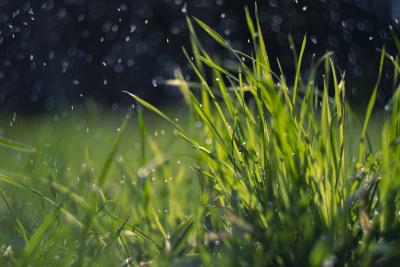Weekly Watering Number
The City of Corvallis is pleased to bring you a Weekly Watering Number. This number is updated weekly to reflect the prior week's evapotranspiration. This number represents a suggested amount, in inches, for you to water over the course of the current week. This number isn't a requirement -- it is simply a guide for how much you could water the average lawn based on how much water was lost through evapotranspiration the week prior.
Before You Start
Before you start putting the weekly watering number into action, make sure you know how long it takes your irrigation system to water 1 inch. This will help you apply water more accurately. If the weekly watering number recommends more than 1 inch for the week, we recommend splitting that into smaller watering sessions (ex. For 1 inch, two separate 0.5 inch sessions), to help the water infiltrate into the soil. And don't forget to do any watering early in the morning!

Latest Potential Evapotranspiration value for Corvallis:
If this fails to load, please use this link instead and click that map for value.
Data source: Climate Toolbox
This number is just a suggestion - different types of plants have different water needs, and this number is estimate based on grass only. Some tips: shrubs, perennials, and vegetables generally need less than the full amount of water recommended above, and you should talk to local nursery staff about tree specific watering. Established plants (that have been planted for more than a year or two) usually don't need as much water as new plants. Overall, this number is here to help you adjust your watering based on weather changes throughout the summer.
What is evapotranspiration?
Evapotranspiration is a measure of the amount of water moving from the earth's surface into the air. It accounts for the loss of water through evaporation (from the earth) and transpiration (from plants). Basically, evapotranspiration is how much water is lost in a set period of time.
Where does this come from?
This data comes from the Climate Mapper tool run by a climate research lab at the University of California Merced, which provides a potential evapotranspiration value for grass over the last seven day time period for the contiguous United States.
This page will be updated once the spring rains stop through the summer until mid-October, when the rains begin again.
Read More
Interested in learning more about irrigation? Check out our Smart Irrigation page, which has links to additional resources at the bottom.
Want to water even less, saving time, energy, and money? Try having A Golden Landscape this summer.
Thinking of investing in smarter technology? Apply for our Smart Irrigation Rebate Program.
